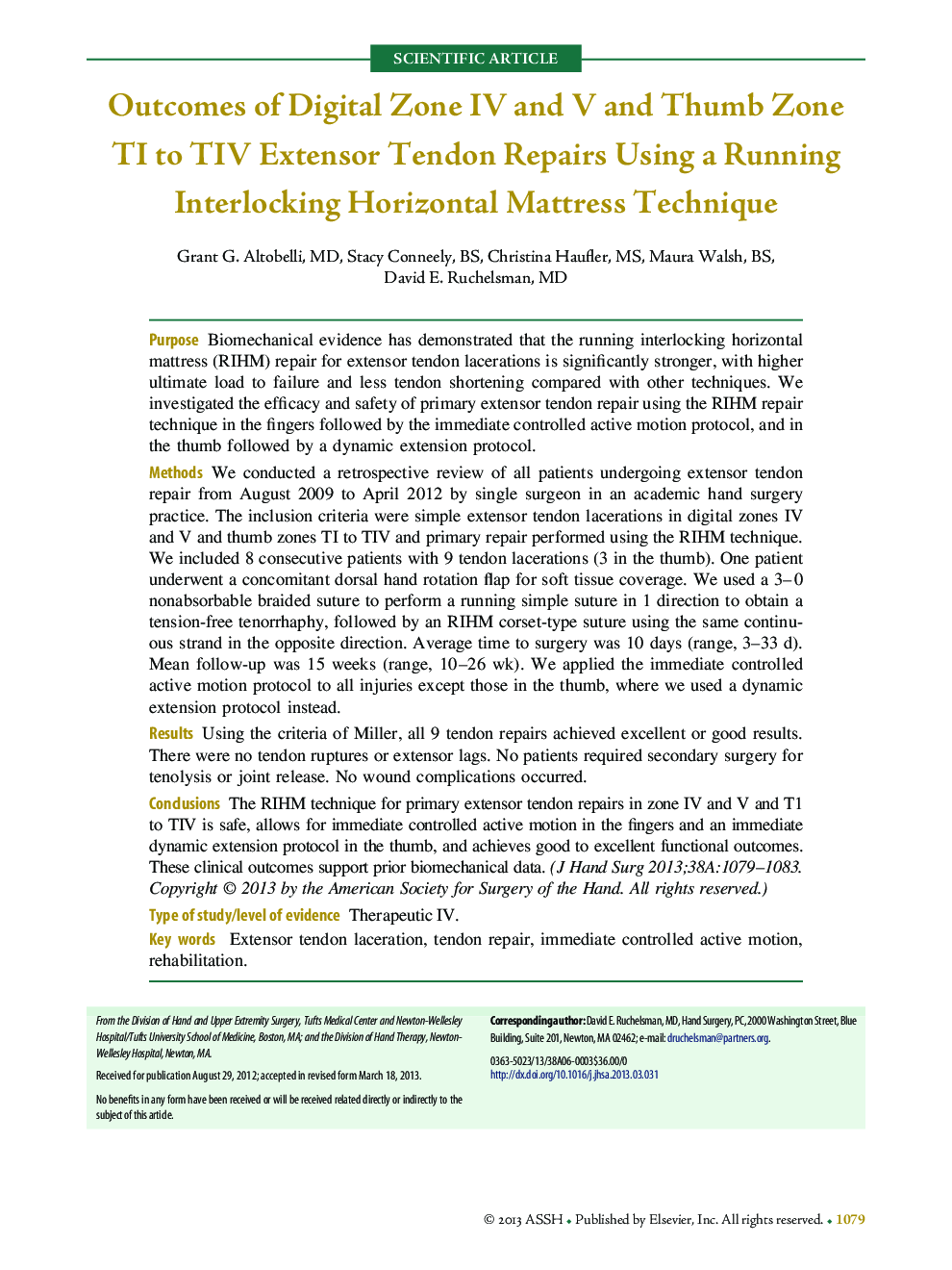| کد مقاله | کد نشریه | سال انتشار | مقاله انگلیسی | نسخه تمام متن |
|---|---|---|---|---|
| 4067849 | 1604382 | 2013 | 5 صفحه PDF | دانلود رایگان |

PurposeBiomechanical evidence has demonstrated that the running interlocking horizontal mattress (RIHM) repair for extensor tendon lacerations is significantly stronger, with higher ultimate load to failure and less tendon shortening compared with other techniques. We investigated the efficacy and safety of primary extensor tendon repair using the RIHM repair technique in the fingers followed by the immediate controlled active motion protocol, and in the thumb followed by a dynamic extension protocol.MethodsWe conducted a retrospective review of all patients undergoing extensor tendon repair from August 2009 to April 2012 by single surgeon in an academic hand surgery practice. The inclusion criteria were simple extensor tendon lacerations in digital zones IV and V and thumb zones TI to TIV and primary repair performed using the RIHM technique. We included 8 consecutive patients with 9 tendon lacerations (3 in the thumb). One patient underwent a concomitant dorsal hand rotation flap for soft tissue coverage. We used a 3–0 nonabsorbable braided suture to perform a running simple suture in 1 direction to obtain a tension-free tenorrhaphy, followed by an RIHM corset-type suture using the same continuous strand in the opposite direction. Average time to surgery was 10 days (range, 3–33 d). Mean follow-up was 15 weeks (range, 10–26 wk). We applied the immediate controlled active motion protocol to all injuries except those in the thumb, where we used a dynamic extension protocol instead.ResultsUsing the criteria of Miller, all 9 tendon repairs achieved excellent or good results. There were no tendon ruptures or extensor lags. No patients required secondary surgery for tenolysis or joint release. No wound complications occurred.ConclusionsThe RIHM technique for primary extensor tendon repairs in zone IV and V and T1 to TIV is safe, allows for immediate controlled active motion in the fingers and an immediate dynamic extension protocol in the thumb, and achieves good to excellent functional outcomes. These clinical outcomes support prior biomechanical data.Type of study/level of evidenceTherapeutic IV.
Journal: The Journal of Hand Surgery - Volume 38, Issue 6, June 2013, Pages 1079–1083